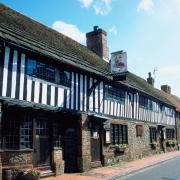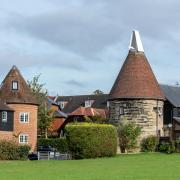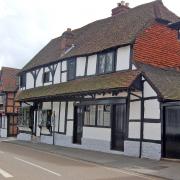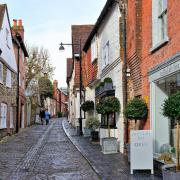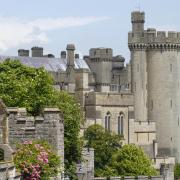The much-loved Sussex Carol is performed all over the world at Christmas time, but what gave rise to its name? Angela Wintle delves into the history books.
The Sound of Sussex
When it comes to “sweet singing of the choir”, there is no sweeter Christmas moment than a rendition of The Sussex Carol. The four verses, which opens with the lyrics, ‘On Christmas night all Christians sing/To hear the news the angels bring', tells how all Christians rejoice at the coming of their Redeemer and salvation.
It has been performed by choirs for generations and places Sussex firmly in the hearts and minds of people the world over at Christmas tide. Fittingly, the choir at Chichester Cathedral regularly performs it at the cathedral’s annual Festival of Nine Lessons and Carols, and the carol also features on its new album, Carols from Chichester Cathedral.
But why is it known as The Sussex Carol? It gained its name when Ralph Vaughan Williams, one of Britain’s greatest composers, first collected and documented it after hearing it being sung by Harriet Verrall of Monk’s Gate near Horsham, West Sussex, in 1904.
Vaughan Williams loved Christmas and had a lifelong passion for carols, admiring their freshness, beauty and nobility. It was an interest generated by his enthusiasm for folk songs, which were fast becoming extinct largely because the oral tradition – which had helped preserve them for generations – was being undermined by the increase in literacy and printed music in rural areas.
In an attempt to halt this decline, Vaughan Williams, alongside Cecil Sharp, the founding father of the folklore tradition in England, travelled the length and breadth of the countryside to collect folk songs and carols from noted singers, transcribing and preserving them. Among these singers was Mrs Verrall, who enchanted Vaughan Williams with The Sussex Carol melody.
The carol, also known as On Christmas Night True Christians Sing and On Christmas Night All Christians Sing, was first printed in The Journal of the Folk-Song Society and later in English Folk-Carols (1911). Vaughan Williams’ arrangement was published as part of his Eight Traditional English Carols of 1919, and again in The Oxford Book of Carols of 1924.
The text comes from the Small Garland of Pious and Godly Songs, a book written by an Irish Franciscan bishop named Luke Wadding and published in Ghent in 1684. It isn’t clear whether Wadding wrote the words or merely noted an earlier composition, but his book became popular, and greatly revised editions were published in London in 1728 and 1731, introducing the contents to English Protestants.
Thus began a process of revision which culminated in versions of the text, very close to Mrs Verrall’s, appearing in Victorian songbooks of the 1830s and 1840s. The song does not have a standard refrain. Instead, each verse is comprised of two couplets. The first couplet is repeated, usually performed in unison voices, and the second couplet is sung once in harmony (typically by three or four voices) and has an unusual three-measure phrasing, rather than the standard two-or-three bar phrasing found in most Western music.
Stephen Cleobury, one of the country’s leading choral experts, who directs the world-famous King’s College choir at its annual Festival of Nine Lessons and Carols from Cambridge, says the carol expresses the joyous side of Christmas. “I have a particular liking for this carol because the melody is immediately appealing and has a lilting rhythm and clear structure,” he says. “The two arrangements I know best are by my two predecessors at King’s, David Willcocks and Philip Ledger. I’ve never arranged it myself because I don’t think these versions can be bettered.”It’s been said that carols are a constant source of happiness and inspiration.
Thanks to the passion and commitment of Ralph Vaughan Williams and Harriet Verrall, The Sussex Carol continues to bring seasonal joy to believers and non-believers alike, who live far beyond the county from which it takes its name.
The Sussex Carol
On Christmas night all Christians sing
To hear the news the angels bring.
News of great joy, news of great mirth,
News of our merciful King's birth.
Then why should men on earth be so sad,
Since our Redeemer made us glad,
When from our sin he set us free,
All for to gain our liberty?
When sin departs before His grace,
Then life and health come in its place.
Angels and men with joy may sing
All for to see the new-born King.
All out of darkness we have light,
Which made the angels sing this night:
"Glory to God and peace to men,
Now and for evermore, Amen!"
From Mrs. Verall, Monks Gate, Sussex and harmonization by R. Vaughan Williams, 1919








